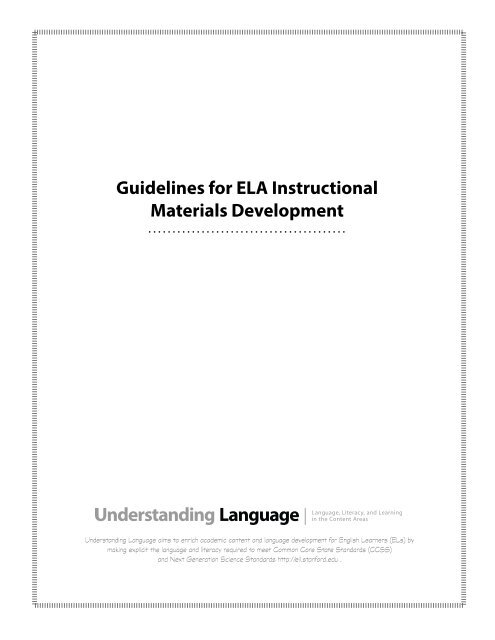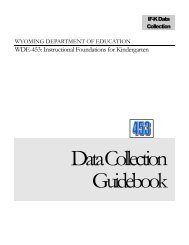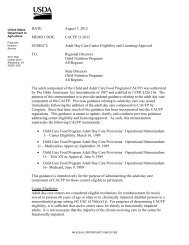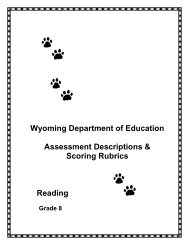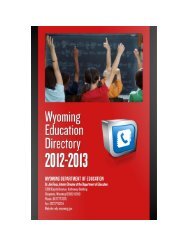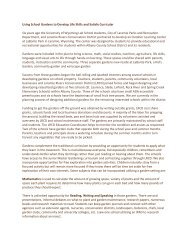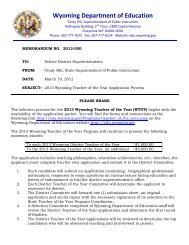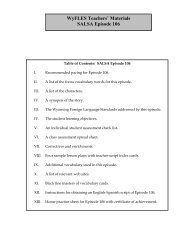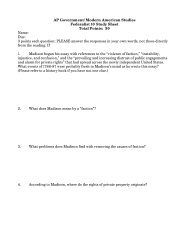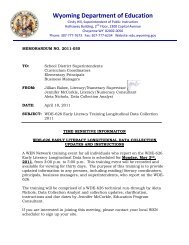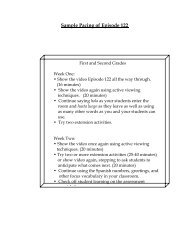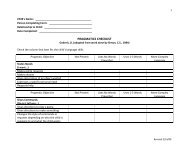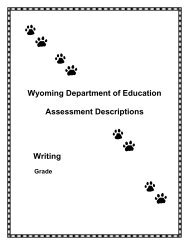Guidelines for ELA Instructional Materials Development 11-26-12
Guidelines for ELA Instructional Materials Development 11-26-12
Guidelines for ELA Instructional Materials Development 11-26-12
Create successful ePaper yourself
Turn your PDF publications into a flip-book with our unique Google optimized e-Paper software.
<strong>Guidelines</strong> <strong>for</strong> <strong>ELA</strong> <strong>Instructional</strong><br />
<strong>Materials</strong> <strong>Development</strong><br />
Persuasion Across Time and Space:<br />
Analyzing and Producing<br />
Persuasive Texts<br />
For review purposes only<br />
Understanding Language aims to enrich academic content and language development <strong>for</strong> English Learners (ELs) by<br />
making explicit the language and literacy required to meet Common Core State Standards (CCSS)<br />
and Next Generation Science Standards http://ell.stan<strong>for</strong>d.edu .<br />
Understanding Language | Language, Literacy, and Learning<br />
in the Content Areas ell.stan<strong>for</strong>d.edu { 1 }
GUIDELINES FOR <strong>ELA</strong> INSTRUCTIONAL MATERIALS DEVELOPMENT<br />
George C. Bunch<br />
In collabora2on with the Understanding Language Ini2a2ve’s English Language Arts (<strong>ELA</strong>)<br />
Workgroup:<br />
George C. Bunch (Chair), Martha Inez Castellon, Susan Pimentel, Lydia Stack, and Aida Walqui<br />
November 24, 20<strong>12</strong><br />
Background<br />
“Persuasion Across Time and Space” [hQp://ell.stan<strong>for</strong>d.edu/teaching_resources/ela] is an<br />
instruc2onal unit designed to exemplify how educators can realize opportuni2es <strong>for</strong> English<br />
Language Learners (ELLs) presented by the Common Core State Standards in English Language<br />
Arts and disciplinary literacy. This unit was developed <strong>for</strong> the Understanding Language Ini2a2ve<br />
(UL) by WestEd’s Teacher Professional <strong>Development</strong> Program, in collabora2on with UL’s English<br />
Language Arts (<strong>ELA</strong>) Working Group. While crea2ng the unit, we developed the following<br />
<strong>Guidelines</strong> <strong>for</strong> <strong>ELA</strong> Instruc2onal <strong>Materials</strong> <strong>Development</strong>. The ini2al purpose of these guidelines<br />
was to help the team ar2culate a working understanding of what the unit was meant to<br />
illustrate. We also wanted to share these understandings with those who would be reviewing,<br />
pilo2ng, and otherwise using the unit: teachers, curriculum specialists, school administrators,<br />
district-‐level instruc2onal leaders, professional development providers, and others. Finally, we<br />
believe that the guidelines will be helpful <strong>for</strong> teachers and others engaged in the development<br />
of classroom lessons and units that are guided by the new standards and effec2ve <strong>for</strong> ELLs.<br />
These <strong>Guidelines</strong> should not be confused with the Publisher’s Criteria <strong>for</strong> the Common Core State Standards in English Language Arts and<br />
Literacy, a more extensive document intended <strong>for</strong> commercial textbook companies and curriculum developers that was prepared,<br />
independently from the work of the Understanding Language Initiative, by lead writers of the Common Core State Standards <strong>for</strong> <strong>ELA</strong>/Literacy<br />
and promoted by the Council of Chief State School Officers and others.<br />
1 We are grateful to Rob Lucas, Rachel Lotan, and Steven Weiss <strong>for</strong> helpful comments on earlier drafts of these guidelines.<br />
Understanding Language | Language, Literacy, and Learning<br />
in the Content Areas ell.stan<strong>for</strong>d.edu { 2 }
1. Begin with a potent set of Common Core <strong>ELA</strong>/disciplinary literacy standards.<br />
Choosing standards around which to develop instruction involves much more than the<br />
creation of a “laundry list” of standards that appear to have relevance to the unit. Rather,<br />
designers of instructional materials should carefully select a small number of key<br />
standards across the various domains (reading, writing, listening/speaking, and language)<br />
that anchor compelling instruction <strong>for</strong> both students and teachers.<br />
2. Envision lessons and activities that allow students to engage with the standards in<br />
integrated, recursive, and generative ways throughout an instructional unit.<br />
Although it is appropriate to highlight particular standards in particular activities, the goal<br />
is to move away from activities that are broken up into micro-level, discrete “skills” toward<br />
instructional lessons and units that provide multiple, recursive, and integrated<br />
opportunities <strong>for</strong> students to address the standards.<br />
3. For students with different academic and linguistic backgrounds, create various<br />
instructional pathways that promote high levels of access to, engagement with, and<br />
achievement of the standards. The goal is to create supportive structures that allow<br />
students to engage in communities of practice that foster opportunities <strong>for</strong><br />
“apprenticeship” and that lead, over time, to students’ full and independent participation.<br />
4. Select in<strong>for</strong>mational and literary texts that provide students with opportunities to<br />
encounter and engage with various kinds of text complexity. Texts might, <strong>for</strong> example,<br />
feature multiple levels of meaning and purpose; different kinds of conventional and nonconventional<br />
structures; gurative, ironic, or ambiguous language; various levels of<br />
semantic and syntactic complexity; and different levels of background knowledge<br />
expected or required (see Appendix A in the <strong>ELA</strong>/Literacy Common Core State Standards<br />
<strong>for</strong> a description of different dimensions of text complexity as well as <strong>for</strong> target levels of<br />
text complexity <strong>for</strong> different grade bands).<br />
5. Prioritize which aspects of text complexity to focus on at various points during<br />
instruction, and provide support <strong>for</strong> students to engage with those aspects. Not all<br />
texts need to represent all types of complexity, nor can all types of complexity in a single<br />
text be focused on simultaneously. Different texts might be chosen to emphasize different<br />
aspects of text complexity, or a single text might be engaged with in different ways<br />
throughout a lesson, focusing on different aspects of text complexity at different times.<br />
6. Provide opportunities to activate and build on students’ background knowledge—in<br />
ways that do not <strong>for</strong>eclose opportunities <strong>for</strong> them to engage with complex text. ELLs,<br />
by denition, are still in the process of developing English language prociency, and they<br />
also may be less familiar with the topics and content of assigned texts than their<br />
mainstream classmates. There<strong>for</strong>e, preparing learners <strong>for</strong> engagement with complex text<br />
is essential. Leveraging students’ existing knowledge and building new knowledge can be<br />
accomplished in a number of ways be<strong>for</strong>e and during a lesson or unit of study—without<br />
preempting the text, translating its contents <strong>for</strong> students, telling students what they will<br />
learn in advance of reading a particular text, or “simplifying” the text itself.<br />
7. Engage students in opportunities to write in meaningful ways <strong>for</strong> different audiences<br />
and purposes. Provide students with authentic models of the types of texts they are asked<br />
to produce and with guidance on the linguistic and rhetorical features of those text types.<br />
8. Utilize different participation structures. ELLs need opportunities to engage in different<br />
kinds of instructional arrangements, from in<strong>for</strong>mal and collaborative group interactions to<br />
Understanding Language | Language, Literacy, and Learning<br />
in the Content Areas ell.stan<strong>for</strong>d.edu { 3 }
<strong>for</strong>mal presentations. They can be supported in using their existing linguistic resources in<br />
order to meet the standards, which call <strong>for</strong> them to collaborate with others to articulate<br />
ideas, interpret in<strong>for</strong>mation, and present and defend claims.<br />
9. Focus on language as a resource <strong>for</strong> meaning making and as a “craft” <strong>for</strong><br />
communicating with different audiences <strong>for</strong> different purposes. Activities calling<br />
students’ attention to features of language (e.g. conventions of written and oral language,<br />
grammatical structures, and vocabulary) are important. Such a focus should be integrated<br />
with—rather than isolated from—meaningful and purposeful engagement with the texts<br />
and ideas at the heart of <strong>ELA</strong> instruction.<br />
10. Create instructional opportunities that recognize that all students, including ELLs,<br />
have linguistic resources that can be used to engage in activities designed to meet the<br />
<strong>ELA</strong> Standards. ELLs are unlikely to sound or write like native English speakers, and they<br />
may not have yet developed a command of standard features of English. Yet they do bring a<br />
range of linguistic resources (home and community language practices, developing<br />
proficiency in English, emergent literacy skills) that can be used to engage deeply with the<br />
kinds of instruction called <strong>for</strong> in the rest of these guidelines. Effective instruction <strong>for</strong> ELLs<br />
capitalizes on students’ resources in order to facilitate access to the standards, which in turn<br />
promotes the continued expansion of ELLs’ linguistic repertoires in English.<br />
NOTE: These guidelines draw in part on the following papers, prepared <strong>for</strong> the January, 20<strong>12</strong>, Understanding<br />
Language Conference at Stan<strong>for</strong>d University and available at http://ell.stan<strong>for</strong>d.edu/papers/practice.<br />
Bunch, G., Kibler, A., & Pimentel, S. (20<strong>12</strong>, January). Realizing opportunities <strong>for</strong> English learners in the<br />
Common Core English Language Arts and Disciplinary Literacy Standards. Paper presented at the<br />
Understanding Language Conference, Stan<strong>for</strong>d, CA.<br />
Hull, G., and Moje, E. B. (20<strong>12</strong>, January). What is the development of literacy the development of? Paper<br />
presented at the Understanding Language Conference, Stan<strong>for</strong>d, CA.<br />
van Lier, L., & Walqui, A. (20<strong>12</strong>, January). How teachers and educators can most usefully and deliberately<br />
consider language. Paper presented at the Understanding Language Conference, Stan<strong>for</strong>d, CA.<br />
Walqui, A., & Heritage, M. (20<strong>12</strong>, January). Instruction <strong>for</strong> diverse groups of English language learners. Paper<br />
presented at the Understanding Language Conference, Stan<strong>for</strong>d, CA.<br />
Wong Fillmore, L., & Fillmore, C. (20<strong>12</strong>, January). What does text complexity mean <strong>for</strong> English learners and<br />
language minority students? Paper presented at the Understanding Language Conference, Stan<strong>for</strong>d, CA.<br />
Understanding Language | Language, Literacy, and Learning<br />
in the Content Areas ell.stan<strong>for</strong>d.edu { 4 }
Language, Literacy, and Learning<br />
Understanding Language | in the Content Areas<br />
Understanding Language aims to enrich academic content and language development <strong>for</strong> English<br />
Learners (ELs) by making explicit the language and literacy required to meet Common Core State<br />
Standards (CCSS) and Next Generation Science Standards http://ell.stan<strong>for</strong>d.edu .<br />
Understanding Language | Language, Literacy, and Learning<br />
in the Content Areas ell.stan<strong>for</strong>d.edu { 5 }


